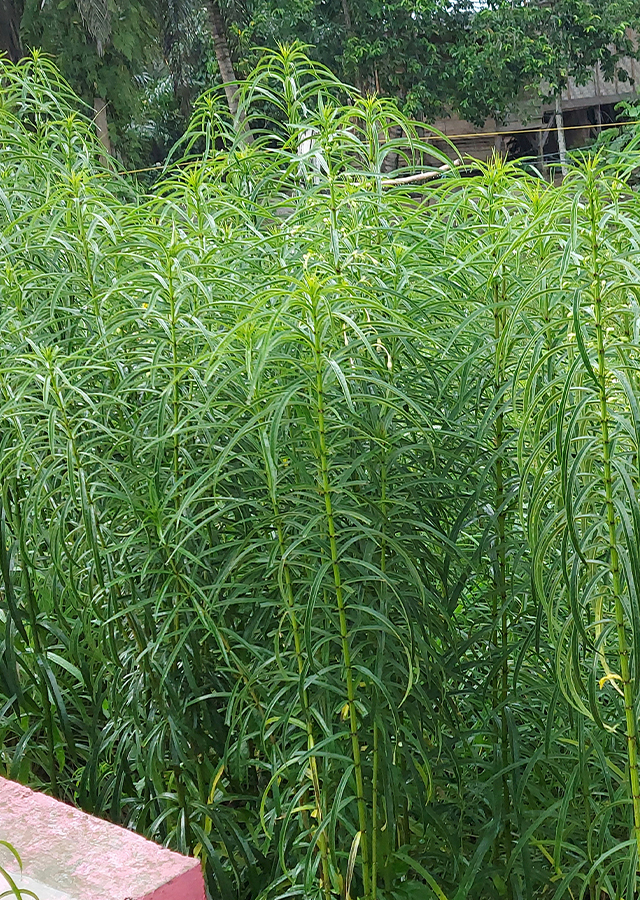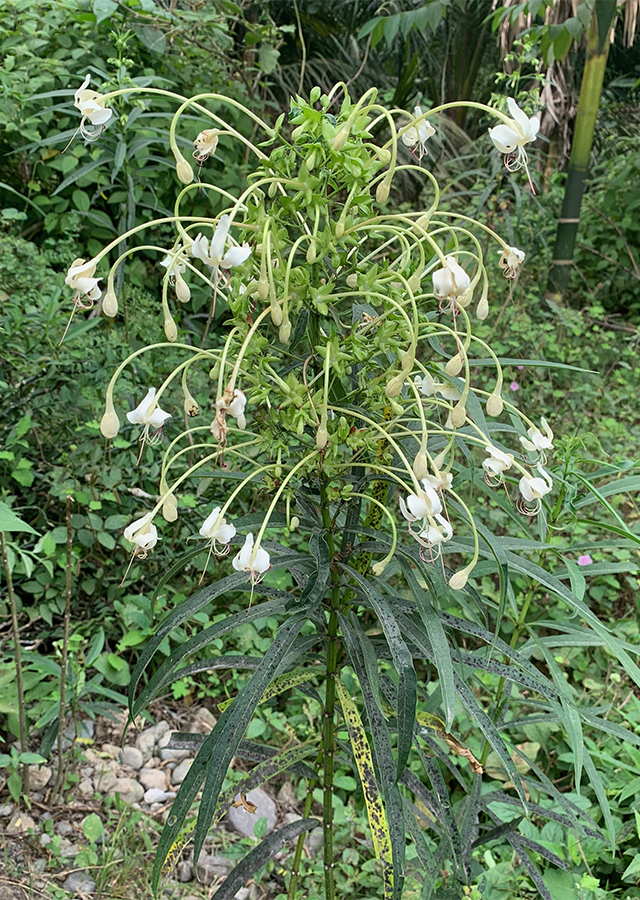Traditional Herbs from Clerodendrum indicum
radang_saluran_kemih_dan_radang_kandung_kemih
- Prepare 30 g genje leaves and 30 g snake tongue.
- Wash and boil in 3 glasses of water until 1 glass of water remains, cool and strain. Drink the concoction at once. Boil the dregs to drink in the afternoon." ,"Drink the concoction 2 times a day.\u00a0
fever_in_children
- Boil dried genje roots 10-15 g with 3 glasses of water until 1 glass of water remains. Once cold, strain and drink at once.
- Do this 3-4 times a day until healed.
What is Clerodendrum indicum Looks like??



Parts of Clerodendrum indicum that could be used
- Leaves
- Roots
- Resin
Clerodendrum indicum Distribution
Genje is widespread in Southeast Asia to southern China such as India, Sri Lanka, Nepal, Bangladesh, Myanmar, Thailand, Cambodia, Laos, Vietnam, Malaysia and Indonesia. Generally growing wild, in the Philippines and Singapore it is reported to have been cultivated. Genje was introduced as an ornamental plant and is used in traditional medicine in Asia.Agroecology of Clerodendrum indicum
It grows ideally at an altitude of 0-1,400 m above sea level, with sufficient sunlight and moderate rain intensity. Tolerant of drought and almost all types of soil with high humidity but well-drained soil, and resistant to salinity.
Morphology of Clerodendrum indicum
- Round green stem with longitudinal cracked texture, hollow middle, sympodia branching.
- Single leaf, short stem, leaf base and pointed tip dark green, 7-15 cm long and 3-4 cm wide.", "Compound flowers, umbrella-shaped, appear in the axils of the leaves and under the base\u00a0of the petiole, the crown is white.
- The fruit is ovate and brown.
- The seeds are round and colored black.
Cultivation of Clerodendrum indicum
Propagation is generative (seeds), while vegetative (stem cuttings and saplings).
Clerodendrum indicum, more details :
Chemical Content of Clerodendrum indicumLeaves: alkaloids, saponins, polyphenols. Stem bark: saponins, flavonoids. Roots: polyphenols, 3, 4-dihydroxyphenylethanol, hispidulin, hispidulin 7-O-glucuronide, eupafolin, scutellarein, clerodendrol, roseoside, lariciresinol 9-O-β-D-glucoside.
Benefits of Clerodendrum indicum
Treats inflammation of the urinary tract, asthma, coughs, rheumatism, pulmonary tuberculosis, flu and fever, sore throat, inflammation of the respiratory tract (bronchitis), sprains and bruises.
Simplisia of Clerodendrum indicum
Information not yet available.
Another Facts for Clerodendrum indicum :
Synonym of Clerodendrum indicumClerodendrum longicolle G.Mey., Clerodendrum mite (L.) Vatke, Clerodendrum semiserratum Wall.
Habitus of Clerodendrum indicum
Bush. Annual shrub, height can reach 1.5-3 m
Habitat of Clerodendrum indicum
- Riverside", "Forest", "Roadside", "Rocky Area
No comments:
Post a Comment